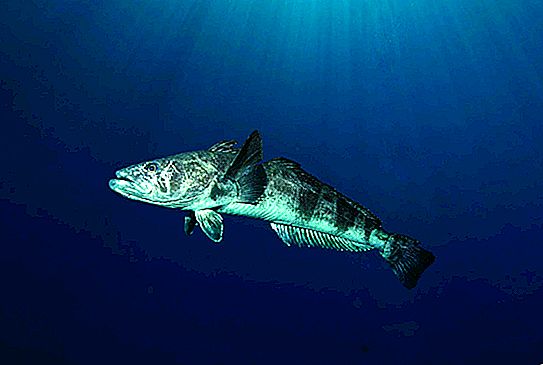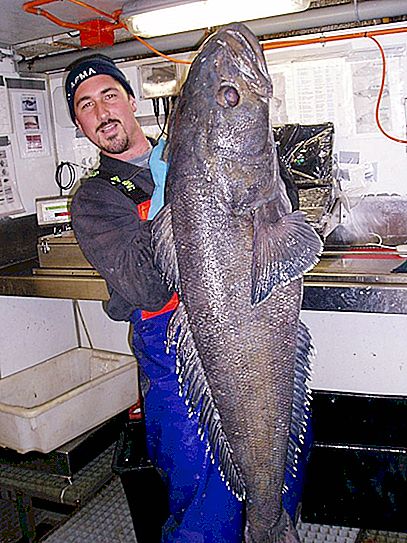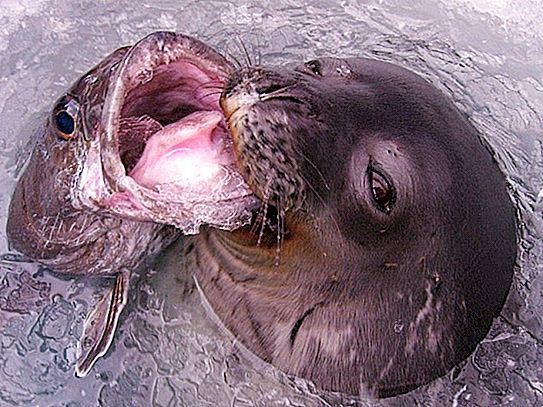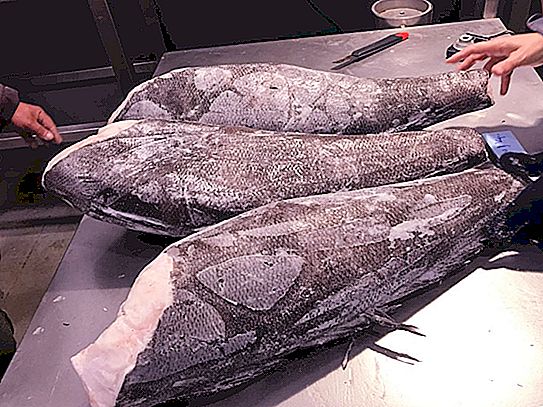Probably not every person who is even interested in biology has heard of Patagonian toothfish about fish. This is a rather unusual representative of the inhabitants of the ocean. Relatively little is known about it, although this fish is common in almost the entire southern hemisphere of the Earth. Let's talk about it a little more.
Appearance
Externally, the fish is not much different from other inhabitants of the ocean. "Options" are pretty standard. First of all, this is a set of fins well-known to biologists - pectoral, anal, caudal and spin.

But the dimensions are impressive. Under favorable conditions, toothfish may well live up to half a century and during this time grow up to two meters. Of course, the weight also corresponds to the length - up to half a centner.
But even with all this, the appearance may surprise an inexperienced biologist. As you can see in the photo, the Patagonian toothfish looks rather creepy, like most of the deep-sea inhabitants of the ocean.
Distribution area
This fish is found in many regions of the southern hemisphere. First of all, these are subantarctic and Antarctic waters off the coast of Argentina and Chile. In addition, he was repeatedly caught off the islands of Hurd and Kerguelen, located in the southern Indian Ocean.
Lifestyle
This fish lives at a considerable depth - as a rule, from 300 to 3000 meters! To survive here, one must be truly adapted to these harsh conditions. And the toothfish really adapted.
For example, its meat contains a large amount of fat - about 30%, due to which the fish can withstand really low temperatures, at which most other marine inhabitants would not survive. Yes, a range from +2 to +11 degrees Celsius is considered comfortable conditions. When the temperature rises, the fish simply die.

Like most deep-sea creatures, Patagonian toothfish is a predator. Moreover, the food is not too picky - it eats almost any prey that is quite inferior to it in size. He eats fish, large invertebrates, squid, does not miss the opportunity to feast on carrion.
But the underwater world is cruel. Few can boast of being at the top of the food chain. Therefore, toothfish itself quite often becomes prey. True, he has only two serious opponents - the Weddell seal and the sperm whale. It was the first of them that made it difficult to study this fish.
Research history
Toothfish was first discovered back in 1888. It was then that the research vessel "Albatross", departing from the US coast, caught an unusual fish near Chile, which was almost two meters long. An unknown science fish was placed in a barrel to show the world community. Alas, the barrel was washed off during a storm - scientists have only photos left.

The next time they managed to catch fish only in 1901. Moreover, they harpooned it into the Ross Sea together with the Weddell seal, which managed to nibble its prey cool, leaving it headless - it was not possible to reliably identify the fish because of this.
Only after more than half a century, the polar explorers again caught Ross toothfish in the same sea - and again with the Weddell seal. However, this time the fish was not only not damaged, but also alive. Thanks to this, scientists had a great opportunity to carefully study toothfish and prove that it is a completely new fish unknown to science.
How did he cross the equator?
As mentioned above, toothfish lives exclusively in the southern hemisphere of the Earth. He could not cross the equator, since here the temperature rises significantly above +11 degrees Celsius, and it is this indicator that is the maximum possible for this fish.
Therefore, it is not surprising that the case of catching Patagonian toothfish off the coast of Greenland caused a serious sensation. The sizes of the fish turned out to be rather big - about 70 kilograms!

Experts from around the world broke a lot of copies, trying to understand how he got here. Different versions were lined up, ranging from eggs accidentally introduced by birds into these regions to the appearance of a new, previously not caught, variety of fish.
It was far from immediately possible to establish a method that allowed fish that could not tolerate warm water to cross from the Southern Hemisphere to the Northern Hemisphere, without harming the transfer of the equator. The secret lies in the fact that toothfish is a deep-sea creature. He used to live at a depth of a kilometer or more. And the water here is practically not warmed up. This is what allowed the toothfish to cross the equator - it just dived a great depth in one hemisphere, and emerged in the other, thus not entering the warm layers of water.




